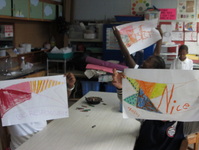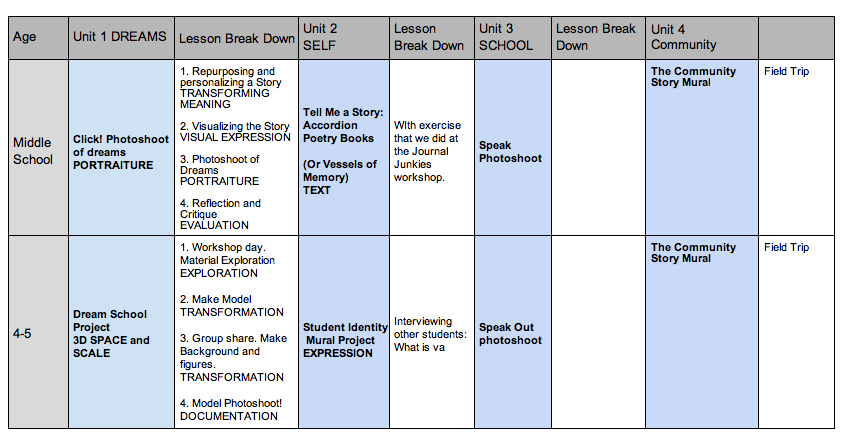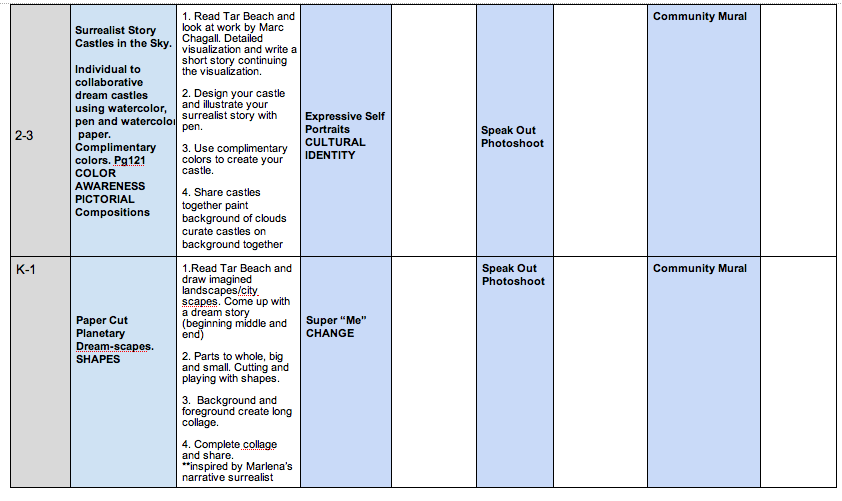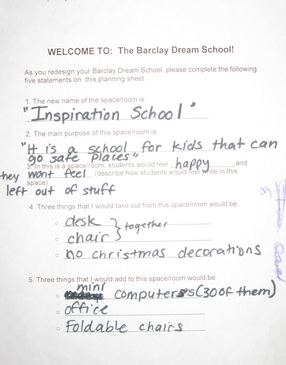
Successes: What I felt to be most successful in this unit, was the student engagement in the process of making art. It seems that these students rarely have the opportunity to paint and make patterns on a large scale. I also think the multiple mediums allowed for very different artistic experiences within the same project. There was no prescribed outcome for this project which allowed students to make their own choices about what colors to chose and what kinds of pattern to make. What was reinforced to me throughout this unit was that student choice, in art making, can lead to higher investment in the work, which then can result in higher quality work.
Challenges: Some students had a difficult time cutting out their figures. They are still young at this age and haven’t fully developed their fine motor skills. They needed quite a bit of help, especially if the poses they took on for their silhouettes were more dynamic. The final challenge was the background. For this part I let students do whatever they wanted. It acted as an extension for those who were done early. I’d like to figure out a more directed idea of what kids could do for their backgounds.

Successes: I think that the idea behind this unit is good. Creating banners to declare and celebrate respect in the classroom. I also found that the streamers were a fun addition at the conclusion of the banner-making.
Challenges: This has been a challenging class from the start because it’s a very large group and there have been so many contrasting personalities. Classroom management has become a large focus within each class. I think that there was a lot less investment from the students in doing this project. One reason why this art exploration was not as successful is because of the lack of the personal meaning. Recognizing this, I created my next lesson to have that personal tie-in. The 2-3rd Graders are now becoming superheroes, creating a symbolic mask showing their super-strengths.

Successes: In terms of student interest and investment, this has been the most successful art exploration. The project is collaborative. Students have really gotten into this idea of team-work. Last week Rashwana who was acting as a leader for the team told her group at the end of class, “I’m really proud of our work”. This was after she mediated a heated discussion about who was going to use the glue saying, “We just need to work together, disagreement is going to set us back.” Joi in another group told me, “What I like about this art program is that you listen to the kids’ ideas.” Both of these comments were very meaningful to me as a teacher, because I think collaborative art making is really good for kids to learn how to probem-solve and the skills developed by this experience are built upon and used throughout life. Joi's comment was important because student choice is so important in education and especially in art making. Choice allows for creativity.
Classroom management has prevented me to do collaborative projects with my other classes. I want to find a way that students can still work together despite this. That’s for me to think more about.
Challenges: At the beginning it was hard for the class to focus on my demonstration of making paper shapes. When the kids are working, they are focused and energetic about their art, it’s when they are waiting or watching that they become disrespectful. I’m learning that demonstrations need to be short and to the point. But I’ve also had experiences where demonstrations are too short and then the quality of student work suffers because a student didn’t know what to do.





 RSS Feed
RSS Feed